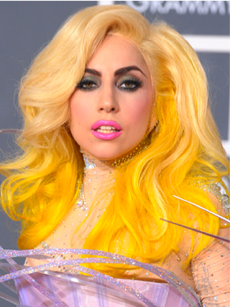Time to wake up and smell the chocolate
I was at the Rock Stars of Innovation Summit in early April, held here in San Diego at the Hard Rock Hotel. It was another event in the technology vortex, exploring the connections between consumer electronics, wireless devices, and medical technology. Whether you call it Digital Health, the Future of Medicine, or simply an extension of technology into new areas, interesting things are happening in this vortex. And every time I go to one of these events, I think about things in a different way.
This time, I started thinking about the different ways that companies develop technology. Consumer electronics companies like Apple and Samsung and Google invest vasts sums of money on the user experience. They use data mining and behavior modeling and predictive analytics. They fund design research and user interface studies and hold focus groups. But instead of getting caught up on the beep and the pop and the click, they focus on the oohh and the ahhhh. They use technology to enhance the user experience.
Med tech companies, on the other hand, use technology in a completely different way. They look at diagnostics and treatment from a medical industry perspective. They do research on drugs and conduct clinical trials and they focus on efficacy and safety and enterprise costs. All of that is fine and dandy, but what about the oohh and the ahhhh? What about the user experience?
The thought occurred to me, What would the world be like if medical technology was developed based on the needs and desires of the patient? What if medical devices were designed to address the user experience of each individual patient? To put it simply:
If Lady Gaga was a diabetic, what would her insulin pump look like?

I am not a diabetic, but when I fill a prescription at the pharmacy it comes in a bland brown pill bottle with an ugly white top, in a chintzy paper bag with a piece of roll form computer paper stapled to it. Of course, even with insurance I’ve paid some ungodly amount of money for it. And when I get home I put it in a cabinet and forget about it. And of course my doctor then lectures at me because I didn’t take my medicine.
Then I hear someone in med tech say, “Oh, we’re working on new technology to monitor patient compliance.” They talk about a sensor and a chip and a transmitter – along with a receiver in a device at a physicians office that can record user data. I have to yawn when I hear this stuff. That’s innovation?
Why can’t my prescription be packaged like a box of chocolate? In a box that says, You’re special. A box that opens with the feel of silk, and gives off a delightful aroma every time I open it. Each pill individually wrapped in a foil wrapper, color coded (in my favorite colors) to the day of the week, with a wireless sensor embedded in the foil, so that when I open the wrapper it not only sends a note to my doctor, The patient has taken their daily medicine, it also sends a viral video clip to my smart phone so that I end up laughing for 10 minutes. And, if I don’t open that foil wrapper, another sensor is triggered and the box emits the aroma of freshly baked oatmeal cookies, and my stomach then tells me, It’s time for my daily medicine.
Patient compliance based on the user experience. Pavlov did the basic research a long time ago.
Why can’t I get a liquid medication in a bottle made of frosted glass, cool to the touch, with a stopper that makes a soft thunk when you open it, like when you open a bottle of aged single malt scotch? Or a spray medication in a perfume bottle? How come I can drag and drop a video clip and send it to millions of people with the click of a mouse, but when I go to the doctor’s office I have to fill out a 6 page form on a clip board using a ball point pen?
Why doesn’t the med tech industry develop products based on the user experience of the patient?
When are they going to wake up and smell the chocolate?









Eric –
What you’re suggesting isn’t just desirable, it’s inevitable. Medicine is going to enter all of our lives on a constant basis in the form of sensors, monitors, connected devices and interfaces such as TVs and smartphones. Soon we’ll all be able to self-monitor health, and will grow older with a much more conscious and interactive perception of our ongoing health status. That require smart design. Much of it should be ‘under the hood’, basically working and invisible in the background. Where an active interface is required, it should be precise, intuitive and adequate to the context and personal situation of the patient. That’s a steep challenge, and you correctly observe that many medical technologies/ devices look and feel like they weren’t designed for the people that use them.
There’s a good reason why medication boxes aren’t as attractive as chocolate boxes: you don’t want someone’s supply of antidepressants or blood pressure drug seem like a snack item. There’s good reason that design sometimes emphasizes an ‘otherness’, signaling that ‘this is serious, watch what you’re doing’. Medication errors are already one of the major problems in healthcare, and poor design often plays a role as much as insufficient home care and education/ instruction. So the design challenge is to both integrate healthcare into daily routine of life, while at the same time maintaining awareness that healthcare is serious and deserves close attention.
We’ve started working on outpatient care, and are looking to integrate devices into post-discharge monitoring. Maybe we’ll have a chance some time to work on a real project together, and find a solution that allows improved healthcare and reduced costs through smart technologies and design that are meaningful to patients.
Best Gerrit
Good points – actually great points.
The idea of a chocolate box was more of a “shift your thinking” kind of thing. I was trying to frame a cold,impersonal,low cost, generic packaging idea, to one where it is warm, friendly, personal, special for you idea. And while I agree that a drug should not be treated like a snack item, my ideas were more about making the process of taking your daily medication pleasant and fun.
And I also agree about your comment about otherness. Design plays a critical role here, even color and shape. There is after all, a reason why Neo took the red pill.
– Eric
Eric,
A thought provoking point of view. Kathy really enjoyed it as well.
I doubt medicine will ever be marketed like an Apple product because the medical marketplace is perverted by Health Insurance paid for by third parties (Employers and Uncle Sam for Medicare). A Third party will never want to pay for oooh and ahhh. If people bought their own health insurance – just like they buy every other form of insurance – they could choose to pay a little more for a product or service that made them feel special.
To realize your vision, I think we have to change who and how healthcare gets paid for.
Hey Eric,
Great out of the box thinking. Have you heard of Rock Health (RockHealth.com)? It’s an incubator specific to healthcare and they are funding some pretty innovative companies adding a more personal component to an otherwise mundane industry.
I look forward to the day in which it’s cool for the average American to care about staying healthy and preventing their inevitable diseases, rather than treating them at their worst…I’m mildly optimistic. One can hope.
Take care,
Jon